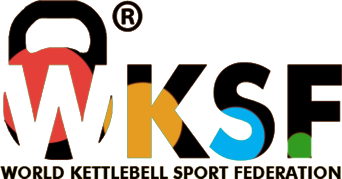The List of Prohibited Substances and Methods
Introduction
The Prohibited List (List) is the core document that identifies the substances and methods that are banned in sport.
The Prohibited List is a mandatory International Standard as part of the World Anti-Doping Program. The List is updated annually following an extensive consultation process facilitated by WADA. The effective date of the List is the 1st January of the following year.
Some substances and methods are banned at all times and others are only banned in-competition.
WKSF advise all athletes, coaches and national team persons to read the World Anti-Doping Code. The Article 2 is one of the most important for your Education & Knowledge about the values to be followed by all athletes.
WKSF has on main list the Substances:
Please, Remember
- Several medications can contain banned substances. It can be a medication prescribed by a doctor or medical professional and the ones possible to buy in a supermarket or from a pharmacy.
- Taking a medication that contains a banned substance is a risk that you need to be aware of.
- If you intend to use a medication, you must ask to your personal doctor, club medical person, national organization or you can confirm by yourself and check that its ingredients do not contain any banned substances. This means all medications must be checked against the List before you take them.
- Do not assume that if it is prescribed by a medical professional that it is safe to take. You are ultimately responsible for what is found in your system (remember the principle of Personal Responsability).
- WKSF is promoting Anti-Doping test by self responsability. While the WADA Signature is in process, the WKSF request to (NADO – National Anti-Doping Organizations) or Private Laboratories. Once WKSF requests to a NADO, the substances requested can be under the similar sports followed by WADA or WKSF can do a specific request if is a private Laboatory.
- The S2 Prohibited Substances are always mandatory at WKSF Anti-Doping Program.
List 2023
The 2023 list is now available and has been in effect from January 1st, 2022.
The list is divided in:
S9 – GLUCOCORTICOIDES* (check information below)
S8 – CANNABINOIDS
S7 – NARCOTICS
S6 – STIMULANTS
M3 – GENE AND CELL DOPPING
M2 – CHEMICAL AND PHYSICAL MANIPULATION
M1 – MANIPULATION OF BLOOD AND BLOOD COMPONENTS
S5 – DIURETICS AND MASKING AGENTS
S4 – HORMONE AND METABOLIC MODULATORS
S3 – BETA-2 AGONISTS ** (check information below)
S2 – PEPTIDE HORMONES, GROWTH FACTORS, RELATED SUBSTANCES AND MIMETICS
S1 – ANABOLIC AGENTS
S0 – NON-APPROVED SUBSTANCES *** (check information below)
P1 – BETA-BLOCKERS
As it relates to modifications, the major ones are outlined below:
1) S9. Glucocorticoids *
The draft 2021 List, which was considered by WADA’s ExCo during its September 2020 meeting, proposed prohibiting all injectable routes of administration of glucocorticoids in-competition. While this modification was approved, the ExCo asked WADA Management to implement the prohibition only as of 1 January 2022, to allow enough time for stakeholders to learn and adapt to this change.
Therefore, all injectable routes of administration will now be prohibited for glucocorticoids during the in-competition period. Examples of injectable routes of administration include: intravenous, intramuscular, periarticular, intra-articular, peritendinous, intratendinous, epidural, intrathecal, intrabursal, intralesional (e.g. intrakeloid), intradermal, and subcutaneous.
For clarification: oral administration of glucocorticoids, which remains prohibited in-competition, includes, in particular, oromucosal, buccal, gingival and sublingual routes.
Other routes of administration (including inhaled and topical: dental-intracanal, dermal, intranasal, ophthalmological and perianal) are not prohibited when used within the manufacturer’s licensed doses and therapeutic indications.
It is strongly recommended that athletes follow the minimum washout periods, expressed from the time of administration to the start of the in-competition period. These washout periods, which are highlighted in the Summary of Major Modifications and Explanatory Note, are based on the use of these medications according to the maximum manufacturer’s licensed doses.
If there is a legitimate medical need for the use of a glucocorticoid, the athlete may apply for a TUE (Therapeutic Use Exemption) . In case of an AAF in-competition, the athlete may apply for a retroactive TUE as provided for in the applicable rules.
For further information regarding WADA’s approach to the routes of administration of glucocorticoids and washout periods, please refer to the Summary of Major Modifications and Explanatory Note.
2) S3. Beta-2 Agonists – Dosage of Salbutamol **
Regarding salbutamol, the daily dosing time intervals are modified to 600 micrograms over eight hours starting from the time any dose is taken (previously 800 micrograms over 12 hours). This is to reduce the risk of any potential AAF arising after high doses are taken at once. The total permitted daily dose remains at 1,600 micrograms over 24 hours. A TUE should be sought for doses in excess of these limits.
For further information on the permitted dosage of salbutamol, please refer to the Summary of Major Modifications and Explanatory Note.
3) S0. Non-approved Substances ***
For the first time, a substance has been included by name as an example in section S0 (Non-approved Substances) of the List. This substance, BPC-157, is an experimental peptide sold as a supplement, and it has been included in the 2022 List following a recent re-evaluation of its status
For any add information, please visit https://www.wada-ama.org/en
WKSF Sponsor for 2022 Anti-Doping Campaign

